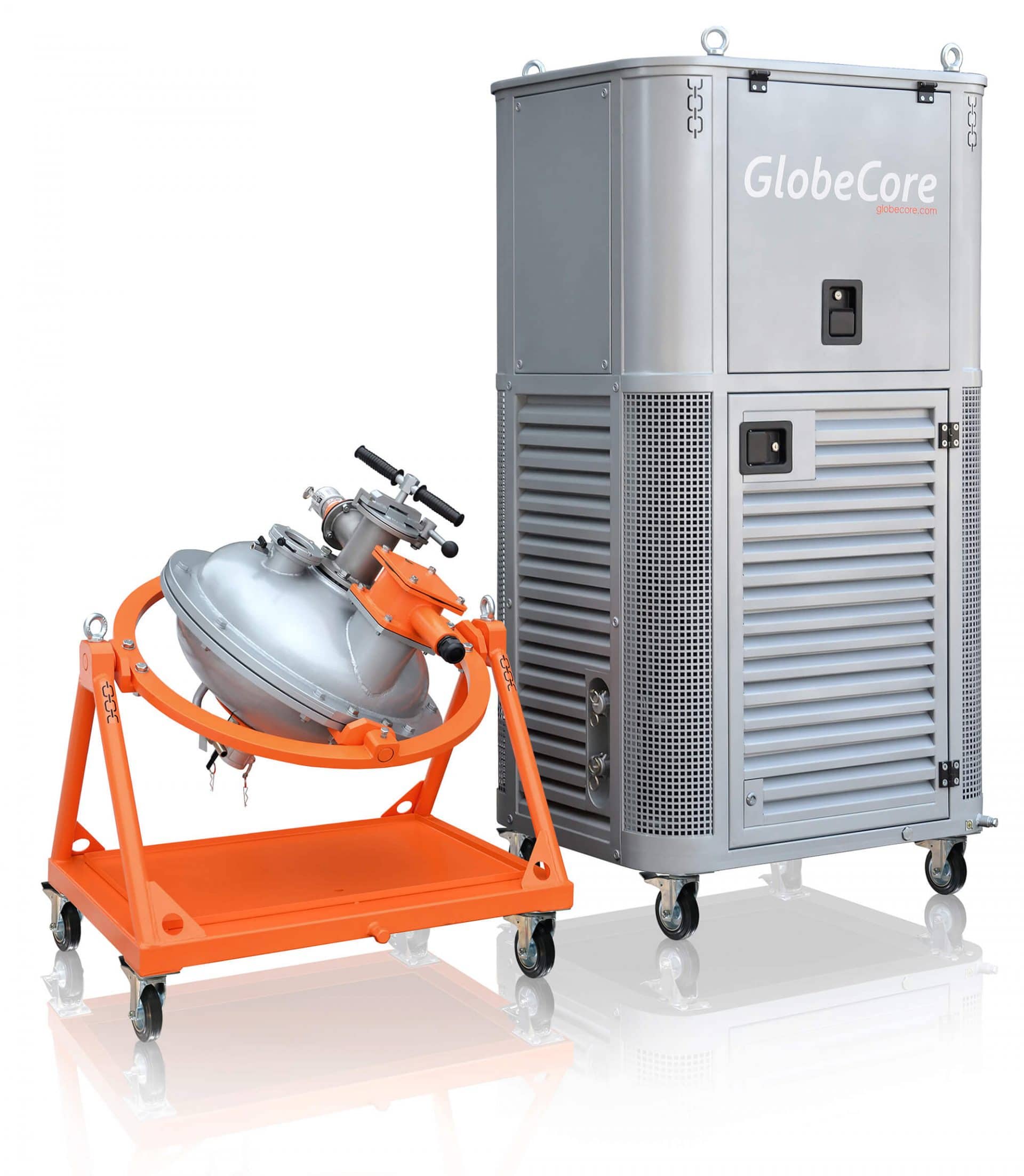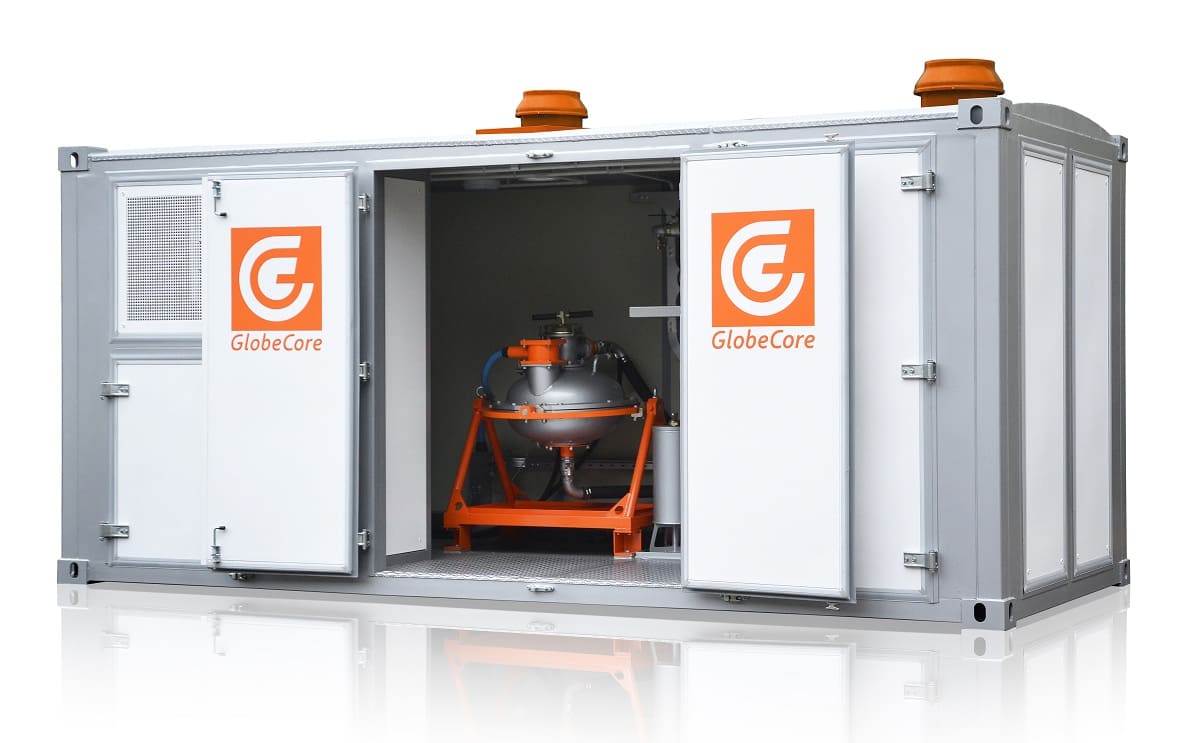GlobeCore vortex layer device (AVS) is versatile equipment used in dozens of industries. In addition to conventional applications where substances are processed, ground, and mixed, or products are obtained by means of the device due to intensification of dispersion processes, the device is suitable for processing the finished parts and materials. Among the tasks for which AVS is used, we highlight parts hardening and mold flash removal from the surfaces of plastic and metal products.
These processes are applied in metallurgy, mechanical engineering, the plastic industry, the manufacture of parts, structures, pipes, and other products. Let us discuss the use of a vortex layer device for each particular task.
Mold flash removal by means of a vortex layer device
Jags, burrs, and mold flash are formed on the surface when manufacturing the parts, products by processing, pressing, and stamping the metal and plastic blanks. These are the residues of material solidified between the components of injection, pressing molds in their butting positions while filling them with material. The causes of mold flash formation:
- structure irregularity, mold fouling;
- excess pressure inside the mold in the process of casting;
- high fluidity of material incompliant with recommended parameters;
- poor gas removal from the unit;
- displacement of pressing mold components.
Even with modern technologies that minimize the formation of mold flash and burrs on parts, they still occur, and this so-called manufacturing defect must be eliminated during further processing.
Conventional technologies for mold flash removal
One of the final stages of processing the plastic and metal products is mold flash removal. It is typically carried out in the following ways:
- manual processing of products;
- mechanical peeling by means of special machines;
- freezing.
It makes sense to remove mold flash manually only at a relatively small manufacturing facility or if automated equipment cannot be used for this process. In this case, the procedure is distinguished by high labor intensity and time consumption.
Automated mechanical processing involves the use of devices with abrasive brushes and a grinding belt. However, it is not always possible to process small parts by this method.
In the event of cooling, units with a coolant, liquid nitrogen are used. In the process of freezing, the mold flash becomes brittle and gets removed, while the product remains intact. The technology is distinguished by energy consumption and high cost.
Mold flash removal by means of a vortex layer device is an alternative to these methods. AVS-100 and AVS-150 models from GlobeCore can be used for this purpose. This option of processing the products is distinguished by simplicity and cost-effectiveness compared to classic methods.
Technology for mold flash removal by means of a vortex layer device

Driven by an electromagnetic field, ferromagnetic needles generate a vortex layer. They actively move through the chamber and rotate. All of that is accompanied by intensive mixing of the medium with abrasives. High local pressures, acoustic vibrations, electrolysis, electromagnetic processing are observed here.
In this medium, the mold flash is removed from plastic and metal products in a matter of seconds — it is just disintegrated by impacts of ferromagnetic particles. It allows increasing the speed and reducing the cost of mold flash removal several-fold compared to manual, conventional automated processing of parts and freezing.
And for even greater intensification of the processes, a part is put on a special tool on which it will rotate. It is suitable for small products with holes. Rotation removes mold flash and burrs even faster.
In addition, along with mold flash removal, the products are finished, cleaned, polished without affecting the dimensional tolerance.
Parts hardening through the use of a vortex layer device
Parts surface hardening is carried out by cold working. It constitutes a change in the structure, phase composition of a metal or an alloy due to plastic deformations. The parts are hardened at a temperature lower than the recrystallization temperature. While processing the material, its crystalline structure changes. As a result, the hardness and strength increase, and the impact toughness of the material decreases. Furthermore, the metal ductility and resistance to deformation of opposite sign decrease as well.
Cold working can be phasic and deformational. In the first case, the parts are hardened due to phase transformations, and in the second case — due to the influence of external deformation forces.
In general, cold working is performed in order to increase the surface strength of parts, blanks, products made of metals and alloys.
Conventional technologies for parts hardening by cold working
Parts hardening by cold working involves metal processing under pressure by surface plastic deformation of various types. In this case, the following procedures are applied:
- shot blasting;
- centrifugal ball technology;
- surface mandreling;
- rolling of surfaces;
- cold forging;
- dragging;
- pressing.
With different processing methods, they affect a blank in their own way. The blank is processed in special units under a press, using the impacts of metal balls, a stream of pellets, and other technologies. Most of them are quite complex, energy-intensive, and require massive, powerful equipment.
Parts surface hardening by means of AVS is an alternative method of cold working in an electromagnetic field under the influence of ferromagnetic particles. It is simpler and more cost-effective than classic methods of metal processing.
Technology for parts hardening by means of AVS
Parts hardening in an electromagnetic field was studied in practice and described by D. D. Logvinenko back in the 60s. A test was carried out when cooling the rolled products using a vortex layer device in the “ferromagnetic disks” mode — the vortex layer density exceeded critical values.
During metal processing with ferromagnetic particles in a vortex layer, a high impact effect on the surface is produced as a result of which cold working is generated. The method is distinguished by high efficiency and cost-effectiveness due to its simplicity, low energy consumption, and high products processing speed.
The degree of influence of a vortex layer on the part depends on the length-to-diameter ratio of particles. The dependence of sample magnetization change can be analyzed by subjecting a ferromagnet to processing and studying how its magnetic properties change. A sample of nickel with the diameter of 0.8 mm and various length was used for the study and processed in a vortex layer for an hour. As a result, maximum changes were obtained when the length increased and the value of magnetizing field intensity decreased.
Advantages of using a vortex layer device
GlobeCore vortex layer device can be used at large enterprises and in compact workshops to perform and intensify several processes at once in the manufacture, processing, preparation of metal and plastic products. Mold flash removal, parts hardening can be carried out faster, more efficiently, and more advantageously. The advantages of the unit include:
- Simplicity
The technological line with the use of a vortex layer device becomes more compact and simpler, and it is easy to integrate the unit into an existing enterprise.
- Efficiency
AVS ensures the intensification of a number of processes, fast parts hardening, efficient mold flash removal minimizing the time and energy consumption for the processes.
- Compactness
It is possible to use the unit even with a shortage of space, because it is distinguished by small dimensions. Furthermore, it requires no pedestal and additional structures for installation.
- Versatility
One device replaces several single-purpose machines at once. In this case, using AVS, it is possible to harden parts and to remove the mold flash from the products made by casting and pressing. At the same time, almost any material can be processed by means of AVS — steel, brass, copper, aluminum, tin, gold, and plastics.
The use of a vortex layer device makes it possible to simplify and increase the productivity of a manufacturer of plastic, metal products, structures, parts, and blanks. For seeking advice and ordering the equipment, please contact GlobeCore sales representatives.


 AVS-100 Mixing Machine. ...
AVS-100 Mixing Machine. ... AVS-150 Chemical Mixing ...
AVS-150 Chemical Mixing ... AVSk-150 Wastewater Treatment ...
AVSk-150 Wastewater Treatment ...